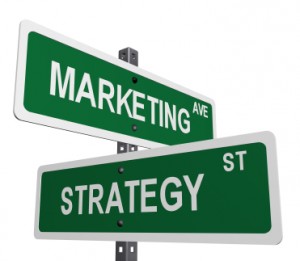 by Justin Grensing, Esq., MBA
by Justin Grensing, Esq., MBA
We often hear narratives about how online retail is replacing traditional brick-and-mortar businesses. Online is more convenient and has much lower overhead. At the same time, others point out that brick-and-mortar still makes up a strong majority of overall retail sales. Customers prefer the tactile experience, the ability to talk to sales representatives and being able to take their purchases home when they walk out of the store instead of waiting for packages to arrive by mail.
The truth is that both sides of this debate are right. There are legitimate benefits to both online and brick-and-mortar retail; companies don’t need to choose one or the other. In fact, they shouldn’t even try! To the extent their market is conducive to this approach, they should be using both channels as complements to each other.
Benefits of Brick-and-Mortar
Business Wire reported on a recent study that looked at consumer attitudes toward and preferences for online versus physical stores. Here are some of the top benefits survey respondents pointed to when asked what they like about shopping at physical stores:
- Being able to get exactly the thing they want – 62 percent
- The immediacy of the experience – 61 percent
- Being able to see the product before it is delivered – 58 percent
- Having a hands-on experience with the product before purchasing – 53 percent
- Being able to ensure that the product being purchased is undamaged – 53 percent
Benefits of Online Shopping
The same study asked survey respondents what they liked about online shopping:
- The ability to find the best price on an item – 52 percent
- Not having to waste time in lines – 50 percent
- Being able to find user reviews, videos and other product information – 47 percent
- The general ease of online shopping – 35 percent
- It allows for shopping on-the-go – 34 percent
- Easy access to rich information about products – 31 percent
Applying an Omnichannel Strategy
While the benefits above may be cited as being derived from one of two channels — physical or online — it doesn’t mean that businesses can’t capitalize on both sets of benefits. An “omnichannel” strategy is one that combines elements of both online and brick-and-mortar shopping to leverage the benefits of both and allow those benefits to complement each other.
“Whether it involves Amazon opening physical stores to supplement their booming online empire or a small family-owned shop expanding outside its own four walls for the first time, the internet has made it possible for companies of all shapes and sizes to take advantage of the benefits of omnichannel commerce,” says Michelle Lee, writing for Toolbox.
Lee offers three examples of how companies can use online and brick-and-mortar channels to complement each other:
Arranging Pickup:
A customer places an order online but wants the product same-day, so they arrange to pick it up at your physical location.
Checking Sizes:
A customer finds your clothing store online but wants to verify the size they are interested in fits, so they come to your physical location to try it on.
Offering a Wider Selection:
“After noticing a sign in your store that mentions you have more colors, sizes, and patterns available online, a customer uses their mobile phone inside the store to order it from your website on the spot.”
While online retail was once seen as the enemy of brick-and-mortar retail, savvy marketers know better. Where others see gloom and doom, they see an opportunity to leverage the benefits of two viable business models to boost sales and customer experience.
Do you?
Stay up-to-date on the latest traditional and digital marketing trends and insights for communication leaders: subscribe to our monthly e-newsletter.
About Us
Strategic Communications, LLC, works with B2B clients to help them achieve their goals through effective content marketing and management with both internal and external audiences. We are adept at evaluating and analyzing communication efforts and working with clients to plan, create and publish high-quality, unique content, through both on- and offline media to achieve desired results. Our background in business journalism, marketing, PR/media relations and online communications makes us well-positioned to serve the needs of 21st-century marketers.
We serve clients who are looking for help creating content for a wide array of channels—from social media posts to full-length manuscripts, and everything in between. We focus primarily on service-related B2B topics and work with a number of independent consultants interested in building their thought leadership through online channels. For ongoing content management, our first step is to fully understand your goals, objectives and competitive landscape.
Then we’ll conduct a thorough analysis and assessment of your digital presence, compared to competitors, and recommend a communication strategy to achieve your goals. But, we also regularly take on individual projects – white papers, blog posts, contributed articles, etc. If you’re interested in learning more, let us know!
(Strategic Communications is certified as a Woman-Owned Business Enterprise through the Wisconsin Department of Administration.)
Recommended Reading
21st Century Secrets to Effective PR: Tips and Best Practices for Gaining Media Exposure
Tags: Amazon, brick and mortar, online shopping, retail experience, retail store closings, showrooming, the death of retail, webrooming
